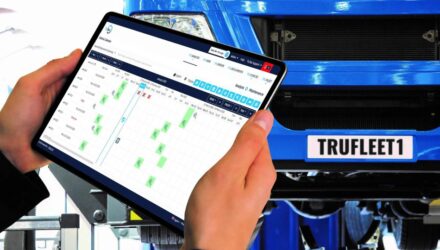
One driver was clocked going 128mph in a 30 zone
The Institute of Advanced Motorists (IAM) has lifted the lid on the worst examples of excessive speeding across England and Wales in 2014.
Britain’s two worst speeders were caught at 146mph, both by Kent Police on the M25. One was travelling anti-clockwise at Junction 5 at Clacket Lane Services, the other going clockwise at Swanley.
But perhaps the most astounding figure was 128mph recorded on London Road, East Grinstead – a 30mph road, exceeding the limit by 98mph.
The statistics come from a Freedom of Information request made by the leading road safety charity to police forces in England and Wales.
Sarah Sillars, IAM chief executive officer, said: “It is disheartening to say the least that some road users are showing such disregard for the safety of all other road users – pedestrians, cyclists, motorcyclists and other drivers.
“At speeds of 140mph an individual is travelling at nearly two-and-a-half miles a minute. At that speed it is simply impossible to react to anything that might happen in front of you.
The ten highest offences were:
| Location | Speed (mph) | Limit (mph) |
| Avon and Somerset Police M4 J20 – 19 Eastbound |
138 | 70 |
| Cambridgeshire Constabulary A14 Eastbound |
128 | 70 |
| Cheshire Constabulary A556 Chester Road |
128 | 70 |
| Cumbria Constabulary M6 Todhills |
136 | 70 |
| Kent Police M25 anti-clockwise Clacket Lane Services Jn 5 |
146 | 70 |
| M25 clockwise Swanley | 146 | 70 |
| Northamptonshire Police A5 Crick Eastern Verge |
140 | 60 |
| North Wales Police A5 Ty Nant to Dinmael, Conwy |
136 | 60 |
| Surrey Police A3 Burntcommon |
127 | 70 |
| Sussex Police London Road, East Grinstead |
128 | 30 |


















Graham
( Wednesday, February 25, 2015 - 11:04 )
Actually, I misread it – seems the IAM themselves sought the data, while I was thinking it was one of the so-called “Safety Camera Partnerships”.
The IAM as far as I know is more concerned with better standards of driving, which is something we should want, rather that ‘just’ a focus on speed.
My general comment on charity status of organisations though which make a living through the whole ‘anti-speed’ industry (for that is what it is) and how they make their living stands.
I’d like to see just how ‘BRAKE’ and other organisations making a living off the back of motorists finances stack up, how much their Chief Executives salaries are, what expenses etc., what they spend on lobbying and legal services etc.
Road Safety has marketed. promoted and built itself a self-made image where it’s Image is that of Organisations acting and motivated purely to protect the public. I am a cynic, and feel certain that many people are making a very tidy living out of this, and that this ‘motivational factor’ is largely ignored and not considered when it should be.
It is reasonable to ask “is road safety the ONLY and PRIMARY reason why the anti-speed lobby do what they do, and HOW they do it?” and then to check them out and see if there might be ‘other’ possible motivational factors?
After all – what would the people in such organisations do to earn a living, if they didn’t do this?
Graham
( Wednesday, February 25, 2015 - 10:48 )
While these speeding offences are deplorable (as they are at speeds which it would be hard to justify under any circumstances), we must accept that there will always be a fractional minority of individuals who will break any boundary.
But…. In the context of how many tens of millions of journeys that are made every year WITHOUT any sensational speeds or incidents, then these isolated ‘big speed’ events are infinitesimal as a percentage. We can also further consider that those with a mind to speed this far in excess of limits will find a time and a place to do so regardless of the activities of a Road Safety Charity.
What worries me is that (of course) there are “Lies, Damn Lies and Statistics”. The article states “The statistics come from a Freedom of Information request made by the leading road safety charity to police forces in England and Wales.”
This “Road Safety Charity” is clearly seeking sensationalistic statistics so that they can then justify their ever-more draconian persecution of the motorist, which then ring-fences the way these people choose to make their LIVING.
Don’t be fooled by the ‘Charity’ (not-for-profit status) of these organisations – there’s lots of salaries, overheads etc. etc. that all have to be settled before any ‘profit’ need be made (and then disbursed so that the “Charity” status can be maintained.
It is unfortunate that these days the true meaning and intent of the term “Charity” can be misused and mis-applied, thus providing a veneer of respectability that perhaps in the cold light of day the organisation claiming to be ‘charitable’ really does not deserve?
Perhaps a better use of the Freedom of Information Act would be an examination of the wealth, assets, salaries, expenses etc. of so-called “Road Safety Charities”? I feel sure that some very interesting “statistics” about them could be unearthed and published that might well be construed to be as ‘sensationalist’ as the speeding statistics?